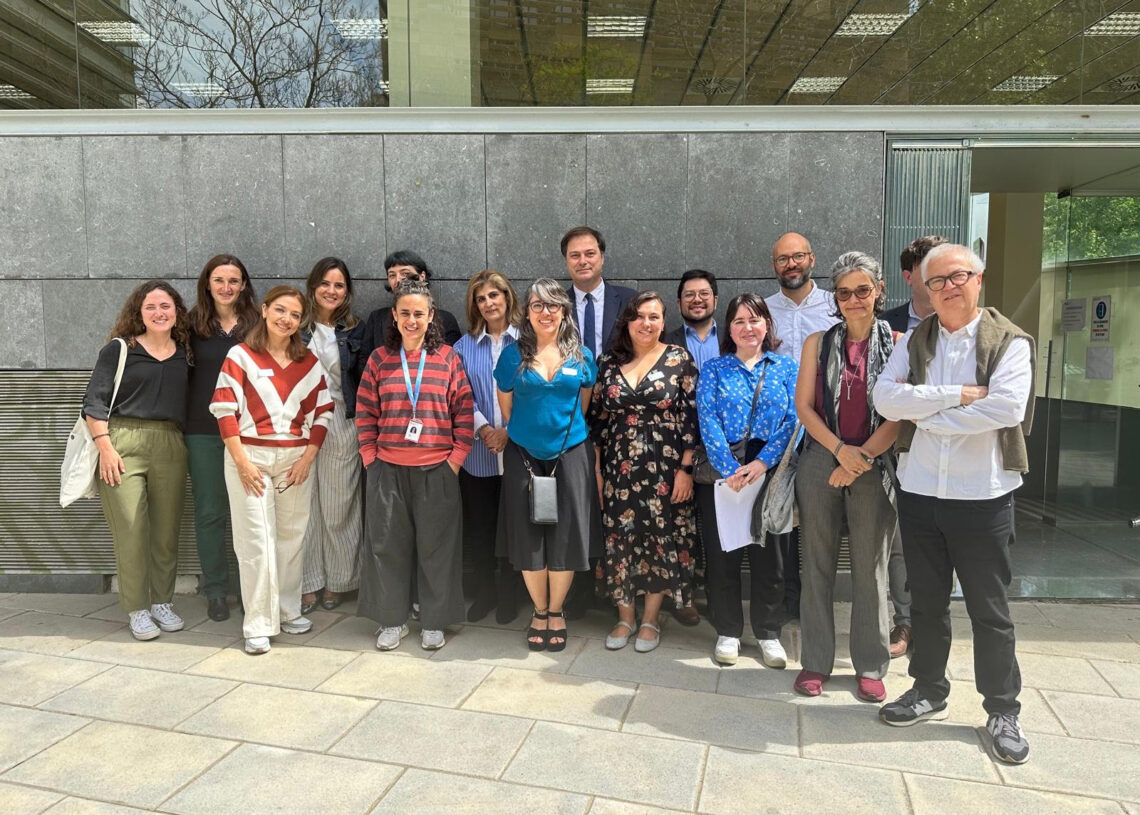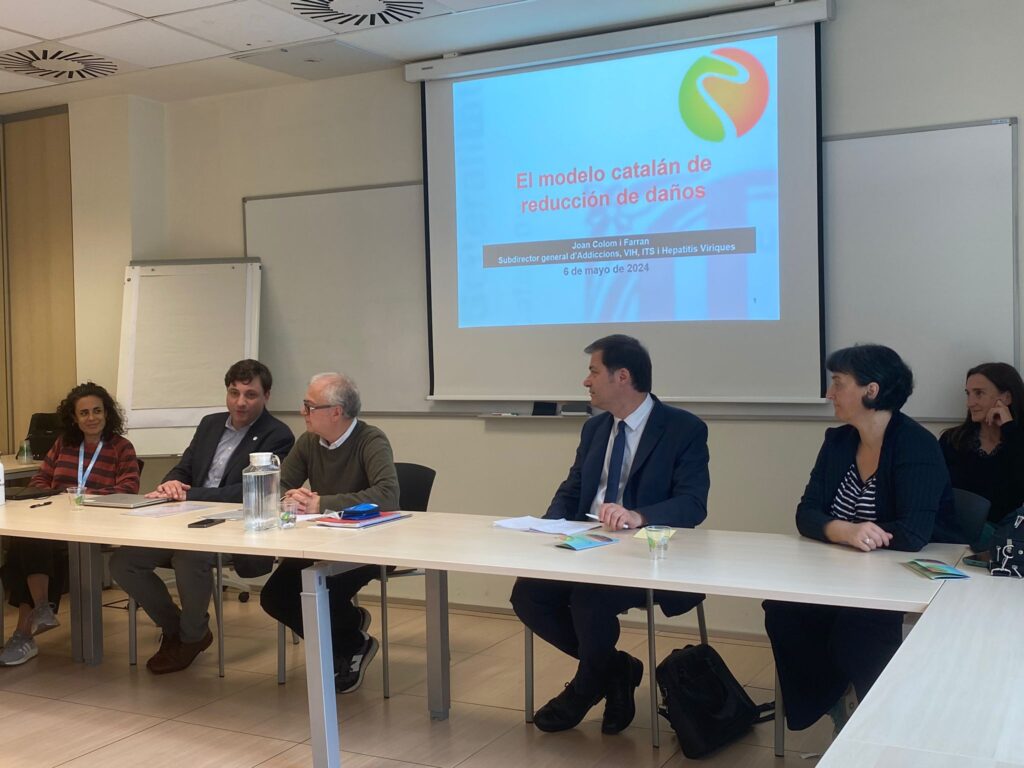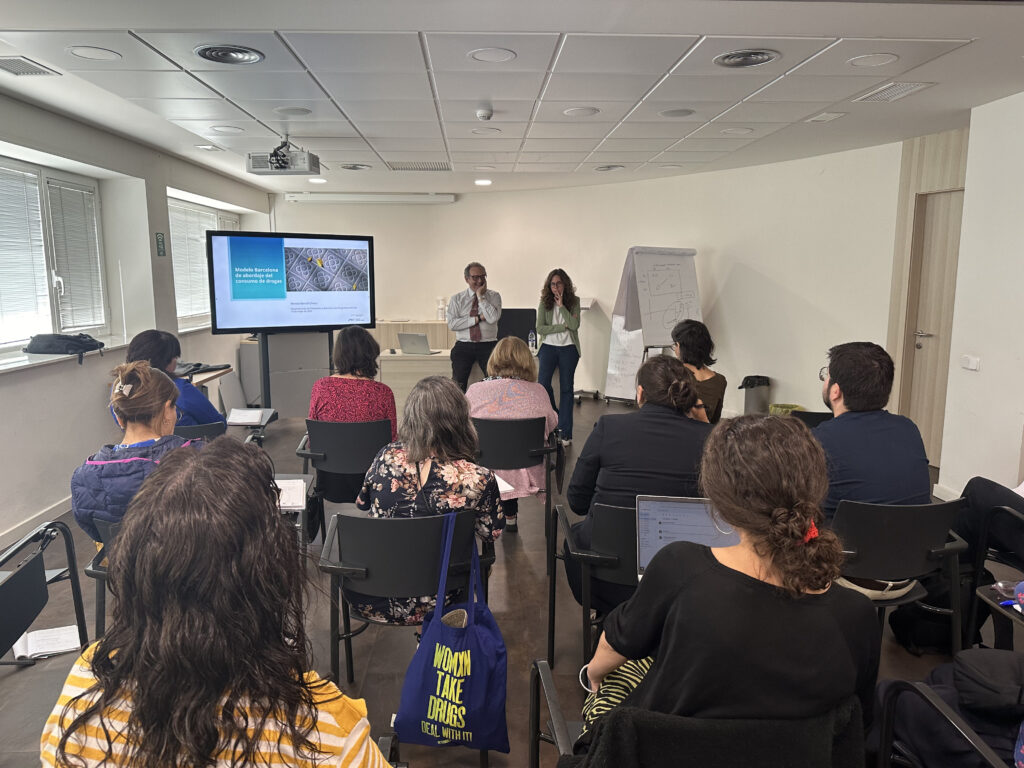Two delegations of drug policy specialists from Mexico and Colombia visited Catalonia from May 6 to 10 to visit 10 pioneering harm reduction resources in Barcelona and its metropolitan area.
Among the spaces, one of the two only rooms for injected and inhaled supervised consumption that exist in Spain (CAS Baluard), a community place for women who suffer violence (Metzineres) or the unit of the Hospital Clínic, pioneer in the treatment of HIV, and where, since 2010, was launched a program for the detection and monitoring of people who practice ‘chemsex‘.
The visit is part of the work that the COPOLAD III Program, led by the FIIAPP, promotes to incorporate harm reduction associated with drug consumption as a part of the health and human rights approach. In this way, it accompanies Latin American and Caribbean countries in legal and operational changes to improve the health impact of drug policies.
Currently, COPOLAD III supports the Ministry of Justice of Colombia in a network of community-based harm reduction mechanisms in 5 cities with an incidence of injecting drug use; and the National Commission on Mental Health and Addictions (CONASAMA) of Mexico to qualify comprehensive care and harm reduction services in relation to synthetic opioids (fentanyl and methamphetamines) and the access of the LGTBIQ+ population to treatment devices.
There is evidence that they work
The internship began with a meeting at the Conselleria de Salut of the Catalan Government, where the harm reduction approach in Catalonia and in the European Union was presented. After a welcoming speech by COPOLAD III manager Borja Diaz, the Catalan government’s responsible for Addictions, HIV, STIs and Viral Hepatitis, Joan Colom, explained the importance of “putting people and human rights at the center from a public health perspective.” “There is a lot of evidence that harm reduction works and that it does not attract new consumers, but it requires broad citizen consensus. In addition, it is essential that it be accompanied by a universal health service and a community dimension,” he said.
In her turn, Iciar Indave, EMCCDA specialist, presented an overview of the existing spaces in Europe, with Germany and Catalonia at the top, and the most relevant data from the Drug Report 2023 on existing and necessary resources, investment, substances or new risk behaviors.
Ten pioneering harm reduction initiatives
The internship, coordinated in collaboration with Episteme, Generalitat de Catalunya and Agència de Salut Pública de Barcelona, included the exchange of expertise with 10 harm reduction resources connected with the programs that Mexico and Colombia are carrying out with the support of COPOLAD III. In each of them, professionals explained their protocols, services, care guidelines, information management or management of critical situations, among other aspects.
- The Harm Reduction Center (REDAN) of La Mina, part of the Hospital del Mar, in one of the areas with the highest traffic and consumption activity in Catalonia.
- The Baluard and Lluís Companys-Cruz Roja Attention and Supervision Center (CAS/ASC), with a methadone dispensing area and a harm reduction area with a supervised consumption room.
- The Centro Residencial Integral de la Galena, a shelter for homeless people with addictions with social and health care programs.
- The Hospital Clínic’s program on ‘chemsex’, requested by Mexico, as in the country they are approaching the reduction of risks associated with substance abuse from the perspective of sexual diversities.
- Metzineres, a Raval’s place with an intersectional feminism and human rights approach.
- Robadors, a community profile harm reduction resource.
- Casanova, a community pharmacy in the city of l’Hospitalet de Llobregat.
- Energy Control, a worldwide pioneering service for the analysis of illegal substances.
- NPK and La Sagrada María cannabis clubs of special interest in Colombia for their community work
The closing meeting of the visit was attended by the Government delegate of the National Drug Plan, Joan R. Villalbí; the manager of the Public Health Agency of Barcelona (ASPB/PHAB), Carme Borrell, and the head of the Service of Prevention and Attention to Drug Addiction of the ASPB, Montse Bartroli, who explained the ‘Barcelona model’ in harm reduction.
Villalbí pointed out that these 30 years of experience in Catalonia began with the heroin epidemic in Spain and that today the major challenges are focused on dealing with new substances and the harms associated with the problematic use of stimulant substances, such as crack and methamphetamine.








